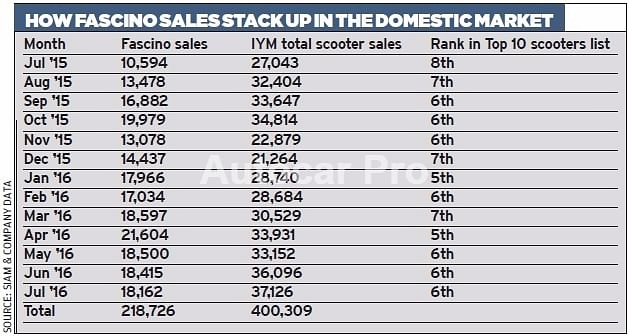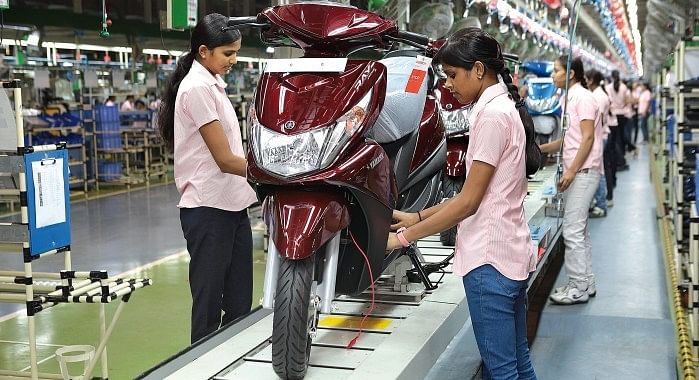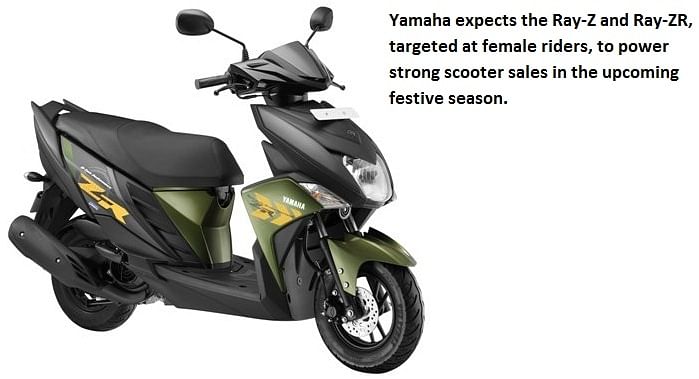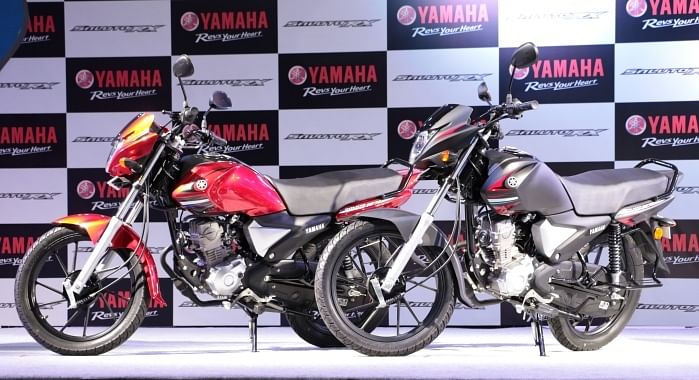India Yamaha expands Fascino production to Surajpur plant
Surging demand for Fascino scooter has seen India Yamaha expand production to its Surajpur (Greater Noida) facility. This will also enable the company to scale up production of its mass commuter bike, the Saluto RX.
Bullish about its scooter sales, India Yamaha Motor has expanded the production of its best-selling scooter model – the 113cc Fascino – from the Chennai plant to its older, Surajpur facility in July-August this year.
The company clarifies that this is not a shift in production (of this model) between two plants but is in line with generating additional supply via production expansion to cater to the high demand for the Fascino. Yamaha’s Chennai factory, which is expanding its production capacity in phases, will continue to produce the model.
The Fascino, a successful scooter model that has turned around Yamaha’s position into a serious player in India's booming scooter market, has also completed a year since its commercial launch in June 2016.
According to industry sales data, the Fascino has sold 218,726 units during the 13-month period (July 2015-July 2016), averaging impressive monthly sales of close to 16,825 units. Sales of this model, however, appear to have stabilised in the range of 18,000-19,000 units a month after its first one-year run in the market. The model is now the sixth best-selling scooter in India.
According to statistics compiled by Autocar Professional, Fascino sales peaked in April 2016 at 21,604 units. The company, on the other hand, recorded its best-ever scooter sales in July 2016, when it sold 37,126 scooters, the highest for any month since the launch of its first scooter, the Ray in 2012. This happened on the back of strong sales of Fascino and Ray Z variants during that month. While Fascino sales stood at 18,162 units, Ray Z variants sold 14,080 units in July 2016.

Sales data for the 13-month period indicates that the Fascino has accounted for close to 55 percent of Yamaha’s total domestic scooter sales. According to the company, it kick-started the fashion scooter segment by launching the Fascino in June last year. The scooter model received instant popularity on the back of its differentiated design language (as against the bulk models available in the market) offered along with vibrant colour options, not commonly seen in India, and its affordable price-tag.
Clearing scooter demand backlog
Yamaha, which has been amassing an order backlog of its scooters, has had to prioritise production at its Chennai plant. The company opted to produce and supply scooters while the Saluto RX, another strategically important model for the company, saw limited production during the June-August period.
Clarifying this move, Roy Kurian, vice-president, sales and marketing, Yamaha Motor India Sales, told Autocar Professional that from September 2016, production of the Saluto RX was to be restored as per its market demand.
“We have one assembly line operational at our Chennai plant where we manufacture the Fascino, Ray-ZR, Alpha front disc
brake variant, Saluto RX and other models. We wanted to meet the demand of scooters and this is just a production adjustment between the two plants to keep up with the model mix. We have expanded the production base of the Fascino to the Surajpur plant while it continues to be produced in Chennai too,” he said.
The senior company official, however, did not disclose the backlog of the Fascino and Ray-ZR. The Fascino has been manufactured only at the Chennai facility since its official rollout.

Yamaha is gunning for 10 percent market share in the domestic scooter segment by December 2016.
Recognising the importance of the Saluto RX in terms of growing bike sales and elucidating on the management decision, Kurian stated: “The product (Saluto RX) is going to be very important for us in the coming times. If you look at the industry, there is a clear market shift towards buying scooters over commuter motorcycles, and it will peak during the festival season this year. It was a conscious decision by the company management to prioritise production of the scooters. We decided to continue focusing on the Fascino as it has stabilised at monthly volumes of over 18,000 units. We have a choice between two popular products; we had to first address the one with the backlog for our customers.”
“Secondly, after launching the Ray-ZR in the market, we are receiving a good response from day one and have long-pending bookings for this new model. Our scooter backlog was increasing and our retail channels are telling us that customers are lining up at our showrooms. We had to also increase the production of the Ray ZR to 12,000-14,000 units in August, which really had to do with the production adjustment of the Saluto RX. From September onwards, it will be restored as per the market demand,” confirmed Kurian.
Related: India Yamaha sales go past 100,000 mark in September 2016
The company had first unveiled the Ray-ZR model at the Auto Expo in February this year and launched it two months later. It is powered by the same single-cylinder, air-cooled, four-stroke, 113cc engine which powers all the other models in India Yamaha’s scooter portfolio.
Yamaha’s Ray-Z scooter model, on the other hand, is made at both the plants – Surajpur and Chennai. The Chennai facility is slated to have an annual production capacity of 1.8 million units, which is planned to go on stream in many phases. According to the senior official, the single assembly line under operation at the Chennai plant is flexible and hence is capable of rolling out scooters as well as motorcycles.
While the Ray-Z is targeted at female riders, the Ray-ZR is packaged for young urban male riders. “I hear that many boys now call the Ray-ZR a moto-scooter. We are looking at creating a new segment and expanding the overall scooter portfolio. The Ray-ZR will play an instrumental role in the same,” said Kurian.
Pinning hopes on the festive season

India Yamaha is buoyant about the market demand during the upcoming festive season between September and November 2016. Kurian expects Fascino sales to cross the 25,000-unit monthly mark during this time. “I hope that the Ray-ZR, which has an actual demand of close to 12,000-14,000 units a month, crosses those numbers for us during the festive month(s),” he remarked.
It is to be noted here that Yamaha is gunning for a 10 percent market share in the domestic scooter segment by December 2016. The company’s priorities and push for volumes in scooter segment are clearly in line with its aggressive plans.
Industry data points out that Yamaha had secured a 6.33 percent share of the Indian scooter market for FY2015-16, beating Suzuki Motorcycle India during the last fiscal for the fourth largest scooter manufacturer.
The last fiscal, which saw the domestic scooter market cross the five million-units mark for the first time, reported total sales of 5,031,678 units (including the scooterettee category as well).
New Saluto RX to rev up bike sales

Saluto RX is selling over 5,000 units a month; Yamaha is targeting big volumes from its strategic mass commuter motorcycle.
When Yamaha had launched the Saluto RX in April 2016, Kurian had told Autocar Professional that the company had targeted sales of 60,000 units of this mass commuter motorcycle model in the first year of its domestic commercial sales. Despite production limitations of the Saluto RX at its Chennai plant, Yamaha continues to remain upbeat about its earlier annual projections. The model, according to Kurian, continues to sell in line with the company's plans. However, Yamaha is now witnessing a shift between buyers of the Saluto 125 to the Saluto RX.
“If we look at the retail sales of the Saluto RX including bookings and enquiries, it is doing over 5,000 units per month. Although it is too early to comment on any cannibalisation between the Saluto 125 and Saluto RX, there could be some shift from the Saluto 125 to the Saluto RX. We are also looking at exports of the Saluto RX but catering to the domestic market is a priority,” said Kurian.
Yamaha is currently riding a growth wave, particularly in scooters, and looks to make the most of the good market sentiment in India.
This article was first published in Autocar Professional's September 1, 2016 NCR Special issue. Get your dose of the latest industry news by subscribing here
RELATED ARTICLES
Bajaj Auto launches new Chetak 3503 at Rs 110,000
The Chetak 3503, with a claimed range of 155km, 63kph top speed and a slower charging time than its 35 Series siblings, ...
Hyundai walks the eco talk with biogas plant, material recovery plant in Gurugram
Operational since October 2022, the facility targets sustainable waste management in Gurugram by undertaking scientific ...
Rajiv Bajaj reappointed MD and CEO of Bajaj Auto for five-year term
Bajaj Auto’s Board of Directors has approved the re-appointment of Rajiv Bajaj as the company’s MD and CEO for another f...






 By Amit Panday
By Amit Panday
 03 Oct 2016
03 Oct 2016
 26425 Views
26425 Views









